Recs & analysis of books/films with explicit or heavily implicit LGBTQIA+ rep. We hope to help people find themselves in fiction.
Don't wanna be here? Send us removal request.
Text

#hamlet x horatio#horatio#hamlet#shakespeare#classic literature#gay subtext#mlm#hamlet does not know what he missed out on#but that's just my opinion#mod Basil
278 notes
·
View notes
Text
“Jane Eyre is not straight,” I say into the mic.
The crowd boos. I begin to walk off in shame, when a voice speaks and commands silence from the room.
“They’re right.” I look to the owner of the voice. There in the fifth row stands: Helen Burns herself.
512 notes
·
View notes
Text
CATCHER IN THE RYEEEEEE
1 note
·
View note
Text
the moral of hamlet is don’t ever try to go home and resolve conflicts with yr family just stay at college and do gay shit w ur friends
443K notes
·
View notes
Text
“nick and gatsby were in love and would have been together if the heteronormative ideology of the time hadn’t prevented it from being explicitly stated in the narrative” i say into the mic.
the crowd boos loudly. i begin to walk off in shame and sadness, when a voice speaks and demands silence from the room.
“she’s right,” they say. i look for the owner of the voice. there in the 5th row he stands: f. scott fitzgerald himself
#the great gatsby#nick carraway#jay gatsby#text post#reblog#classic literature#gay subtext#humor#mod Basil
34K notes
·
View notes
Text
NOVEMBER 29: Louisa May Alcott (1832-1888)
The acclaimed author and poet most well-known for her novel Little Women, Louisa May Alcott, was born on this day in 1832. Although Louisa never explicitly stated her sexuality, there has long been scholarship speculating on her being a lesbian.

A 1865 head shot of author Louisa May Alcott (x).
Louisa May Alcott was born on November 29, 1832 in Germantown, Pennsylvania and was the second of 4 daughters. Her mother, Abby May, worked as a social worker and her father Amos Alcott, was an educator and a staunch transcendentalist. The family moved to Boston in 1834 so that Amos could join the Transcendentalist Club and be among the likes of Henry David Thoreau and Ralph Waldo Emerson. Financial difficulties would force the family to move once more to Concord, Massachusetts in 1840. It was there where Louisa left school and began working as a seamstress and a governess in order to help support the family, as well as where the Alcotts opened up their home as a stop on the Underground Railroad.
At the outbreak of the American Civil War, Louisa served as a nurse in a Union Hospital in Georgetown. This resulted in her first taste of literary success with Hospital Sketches, a collection of the letters she wrote home during her time as a nurse that was eventually published in Commonwealth, an abolitionist newspaper based in Boston. For many years after, she became a popular pulp novelist under the pen name A.M. Barnard. Her legacy was made in 1868 when the first part of the Little Women series was published. Good Wives, Little Men, and Jo’s Boys would eventually follow, cementing the “March Family Saga.”

An original cover spread of Little Women as it was published in 1868 (x).
The lesbian-coding of the character Jo from Little Women and its subsequent series has often been a piece of evidence scholars point to in arguing Louisa’s own lesbianism. Beyond that, though, she also never married and was once quoted as saying, “I am more than half-persuaded that I am a man’s soul put by some freak of nature into a woman’s body…because I have fallen in love with so many pretty girls and never once the least bit with any man.” She also proudly proclaimed herself as living a life of “spinsterhood.” In her later years, Louisa took in her sister’s daughter – also named Louisa, but nicknamed Lulu – and raised her to adulthood after her sister passed away from childbed fever in 1879.
Louisa herself passed away on March 6, 1888 at the age 55. She had long been suffering from health problems such as vertigo and lupus, but her final cause of death was a stroke. She is buried in Sleepy Hollow Cemetery in Concord, Massachusetts in an area known as “author’s hill.” Throughout her life, she published over 30 writings and is now known as one of the leading feminist American writers of the 19th century.
-LC
#louisa may alcott#lesbian#wlw#lgbtq history#lgbtq literature#lgbtq subtext#jo march#little women#classic literature#mod Basil
174 notes
·
View notes
Photo
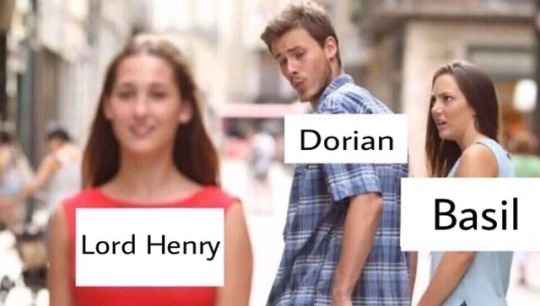

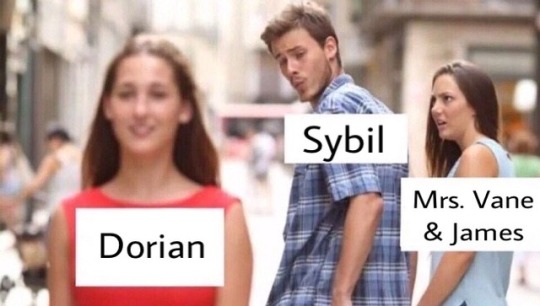

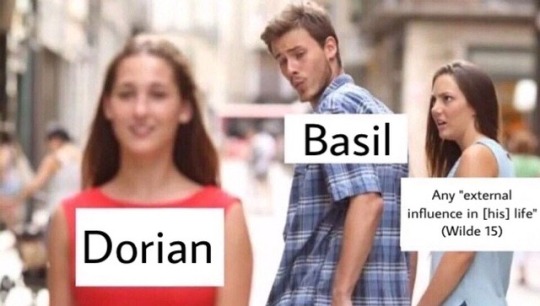


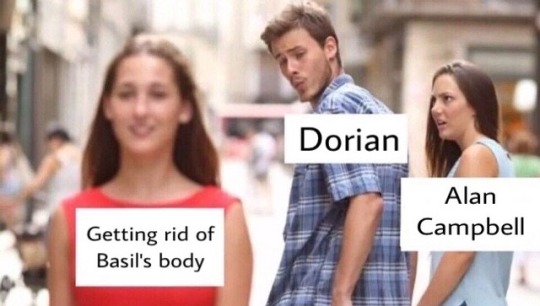


5K notes
·
View notes
Text
The Carmilla Novella: The Lesbian Vampire Story Published 26 years Before Bram Stoker’s Dracula
Author: J. Sheridan LeFanu

(Caption: The iconic illustration from the novella’s initial 1872 publication. Fun fact: while it features several key characters, the illustration depicts no actual scene from the novella.)
This is a review and analysis of LeFanu’s Carmilla, published in 1872. Remarkably enough, the novella has explicit lesbian representation with one of its main characters, however, the novella also exemplifies the double-edged sword that too often accompanies explicit LGBTQ characters and representation in classic literature. We will also be posting a separate review and analysis of KindaTV’s flagship webseries Carmilla, a modern adaptation of the novella, that takes inspiration from the original work but is a source of much more positive and diverse LGBTQ representation.
Spoiler Free Premise of the Novella: (Set around the period the novel was written in. Other than the prologue, the novella is written in first person point of view of the main character, Laura Hesselius.) Laura Hesselius is an 18 year old girl living with her father in a castle (often referred to as the “schloss”) in the presumably German province Styria. With only her father and two governesses to keep her company, Laura longs for a female “companion”. She finds one in Carmilla Karnstein, whose mother entrusts Laura’s father with her daughter’s care for three months while she is away. As Laura and Carmilla become fast friends, Carmilla’s personal identity and intentions towards Laura remain elusive, which all eventually come to a head as her behaviors reveal all her centuries-old secrets.
Review and Analysis: Before you keep on reading, THIS WILL CONTAIN SPOILERS. Well, spoilers for a 145 year old piece of literature.
Before getting too much into the lesbian representation, the novella itself is gorgeously written. Sheridan’s use of gothic themes, imagery, characterization, and engaging dialogue all make it a worthy work of classic fiction that deserves more praise than it has ever received. It’s also worth nothing that the use of a female narrator in a genre that is not heterosexual romance was unusual at this time, and particularly one where the story revolves entirely around her. Laura generally demonstrates an agency of thought and mind uncharacteristic of the times, however, a modern reader should not expect a modern feminist character in Laura as most of her actions are passive, in part due to the fact that her essential role is that of a victim from the start.
Although there are many examples, one of my favorite examples that really shows off LeFanu’s writing ability is in chapter six, A Very Strange Agony, where he has Laura describe the sensation of a dream: “But dreams come through stone walls, light up dark rooms, or darken light ones, and their persons make their exits and their entrances as they please, and laugh at locksmiths.” Literary research has shown that Bram Stoker was inspired by LeFanu’s Carmilla, and some even argue there are more merits to the novella than the 1897 Dracula novel, which sadly has no lesbian vampires.
As for lesbian representation, LeFanu does not hesitate in making Carmilla Karnstein the gayest vampire to walk the planet. From their first meeting, Carmilla is calling Laura her “darling” and “dear friend”. Honestly, there are too many gay moments to count, so I’ll just list some of them below:
“Sometimes after an hour of apathy, my strange and beautiful companion would take my hand and hold it with a fond pressure, renewed again and again; blushing softly, gazing in my face with languid and burning eyes, and breathing so fast that her dress rose and fell with the tumultuous respiration. It was like the ardor of a lover; it embarrassed me; it was hateful and yet over-powering; and with gloating eyes she drew me to her, and her hot lips traveled along my cheek in kisses; and she would whisper, almost in sobs, ‘You are mine, you shall be mine, you and I are one for ever.’ Then she had thrown herself back in her chair, with her small hands over her eyes, leaving me trembling.”
‘“But to die as lovers may--to die together, so that they may live together.”’
‘”And so you were thinking of the night I came here?’ she almost whispered. ‘Are you glad I came?’ ‘Delighted, dear Carmilla,’ I answered. ‘And you asked for the picture you think like me, to hang in your room,’ she murmured with a sigh, as she drew her arm closer about my waist, and let her pretty head sink upon my shoulder. ‘How romantic you are, Carmilla,’ I said. "Whenever you tell me your story, it will be made up chiefly of some one great romance." She kissed me silently. ‘I am sure, Carmilla, you have been in love; that there is, at this moment, an affair of the heart going on.’ ‘I have been in love with no one, and never shall,’ she whispered, ‘unless it should be with you.’ How beautiful she looked in the moonlight!”
Unfortunately, as damning and wonderful as all that evidence is, Carmilla’s status as a lesbian vampire does not give her a happy ending, and, in almost all instances, her sexuality is linked to her unnatural vampirism. Although I think that some of Laura’s descriptions and thoughts about Carmilla indicate internalized homophobia (i.e. if only Carmilla was some “boyish lover”, Laura would reciprocate the advances), LeFanu’s intent in writing her was that she was one of the many good, heterosexual, Christian girls seduced by the perverted charms of Carmilla. Carmilla’s technique of drawing blood from her female victims’ breasts is downright non-consensual erotica, meant to invoke horror. To cap off all the homophobic rhetoric, Sheridan has the male characters go the extra mile with the classic Bury Your Gays trope, driving a stake through Carmilla’s heart, cutting off her head, and burning her on funeral pyre.
The Conclusion chapter, which is rather messily written in my opinion, also gives a nasty implication about suicide and vampires, claiming that suicide causes vampires rather than the simple blood-drinking conversion associated with vampires today.
Despite all of its obvious flaws, I did thoroughly enjoy reading the Carmilla novella. Its uncharacteristic, blatant representation of a lesbian character was enough to draw me in, and I found that overall it was a well written piece of classic literature given all of the different contemporary social standards. If you feel like I did that the pros outweigh the cons and you actively enjoy classic literature, I would recommend this book. If nothing else, it offers a historic, rare glimpse at pre-twentieth century lesbian literature.
#mod Basil#the carmilla novella#classic literature#gothic literature#lesbian#wlw#lesbian vampires#lgbtq representation#tw homophobia#literary analysis#literature review#explicit representation
13 notes
·
View notes
Text
what is it with straight people and expecting you to give them a fucking dissertation double spaced in mla format with credible sources as to why you interpret a fictional character as not straight like idk what to tell you jerry i simply know a gay when i see one
46K notes
·
View notes
Text
nick carraway: has sex with a man in chapter 2
everyone: have you heard that wild new theory about nick being gay? tbh i don't see it in the book but nick & jay would be such a cute ship!! ✨🌈💕!!!
#modd todd#i'm annoyed and i have receipts#more on this story at 10#gatsby#the great gatsby#nick carraway#jay gatsby#gay#natsby
12 notes
·
View notes
Text
im pretty sure someone has already mentioned this but do u ever wonder if the only reason watson had always described holmes as a man who was incapable of love and etc was just for the people to never suspect if there’s anything actually going on between him and holmes bc it was illegal for them to be in a relationship in that time? He was feeding people lies about holmes so they could hide their relationship easier
303 notes
·
View notes
Link
Just FYI, this is already helpfully stated in the article linked above but I thought I’d reiterate, “hardcore gay screenplay” does not mean that Nick Carraway and Jordan Baker are explicitly gay in the screenplay. The overtones of gay subtext, however, are very much there.
I finally uploaded the full version of capote’s gatsby screenplay!! apologies to everyone that it took me so long. enjoy!!
#the great gatsby#book to film#gay subtext#basically nick is really gay and jordan is a lesbian#i might do a more detailed analysis and comparison with the actual book later in the week but i just thought i'd share this now#mlm#wlw#truman capote#mod Basil
4K notes
·
View notes
Text
I’ve been busy thinkin’ about boys*
*my 8ft of terrifyingly-married-body-parts murder boi, adam frankenstein.
128 notes
·
View notes
Photo

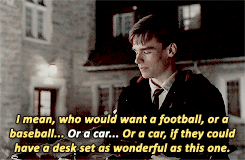
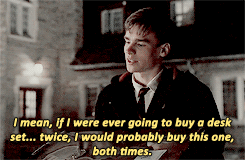
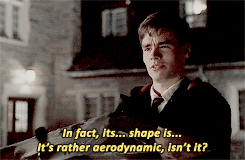


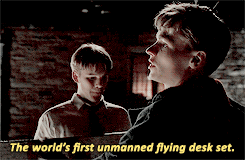
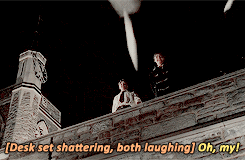

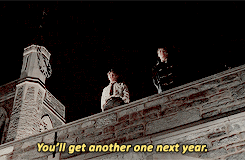
“Isn’t this the same desk set…” “Yeah, yeah, they gave me the same thing as last year.” “Oh. Maybe they thought you needed another one.” “Maybe they weren’t thinking about anything at all. The funny thing about this is I didn’t even like it the first time.”
11K notes
·
View notes
Text
it’s the little things: DPS version
Keating having at least 4 heaps of mashed potato for dinner
that student who secretly eats in class when Neil reads out the introduction
Meek’s nod to assure that, yes, it is only a science experiment
Neil’s soft “Is it your birthday? Happy birthday!”
“Cut out that racket in there!” - *rude squeak*
Pittsie and Meeks holding hands while dancing
Neil sliding and ending up on one knee in front of Todd’s bed so he can throw him the audition poster in the lap
#modd todd#dead poets society#todd anderson#neil perry#gay#subtext#on one knee in front of his bed god help us
2K notes
·
View notes
Photo




Dead Poets Society (1989)
66K notes
·
View notes
Text
i can’t stop fucking thinking about my english prof talking about the queer historical significance of the word “sweet” as a deliberate indicator of homosexual love and how that relates to both edward ii and gaveston, as well as hamlet and horatio. so, because shakespeare was likely totally knowledgeable about codes that queer men were using (cos like duh obvs), the inclusion of “sweet prince” at the end of hamlet is in all likelihood a completely deliberate indication that hamlet and horatio were in love
i’m???? so gay for literature and history lmao
80K notes
·
View notes